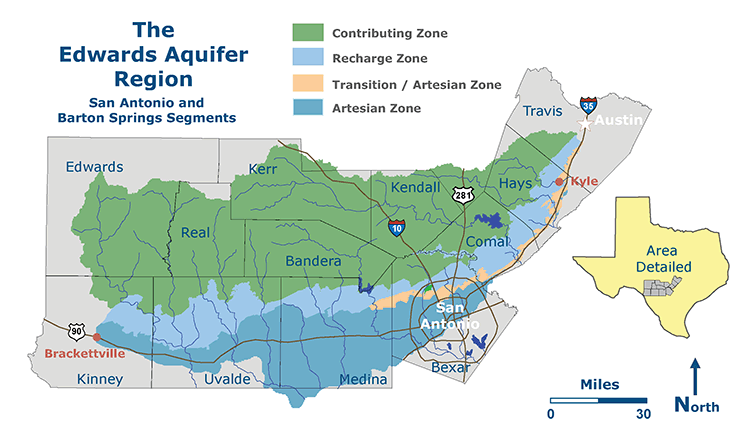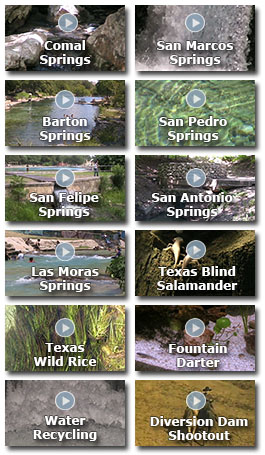
|
|
The Edwards Aquifer is a unique groundwater system and one of the most prolific artesian aquifers in the world. It is one of the greatest natural resources on Earth, serving the diverse agricultural, industrial, recreational, and domestic needs of more than two million users in south central Texas. Within this region and poised on the edge of the vast Chihuahuan desert lies San Antonio, America's 7th largest city. Water from the Edwards is the reason that 18th century Spanish missionaries were able to establish footholds like the Alamo here on the New World frontier. For over two centuries, San Antonio and many other cities in the surrounding region were able to grow and prosper without developing surface water or other water resources because of the Edwards Aquifer. In recent decades, demand for water in the region increased well beyond the Aquifer's capacity to provide for a growing population. Increasing concerns about the welfare of endangered species and regional economies that depend on springflows from the Aquifer became defining issues for central Texas. For these reasons, waters users of the region have faced tough and controversial decisions about who owns, controls, and uses Aquifer water. To develop a rational and sustainable management of this natural resource, it is useful to have is a good understanding of the Edwards and its limitations. These pages were first presented in 1995 by Gregg Eckhardt as an information resource for the general public, so people could become better informed about the Edwards Aquifer and issues surrounding it. More than three decades later, they have a retro-look to them, but I keep the site going because of positive feedback from readers who still find the site useful in exploring the deep history of the Edwards and its many important spring sites.
|
|
Please send suggestions and comments to: gregg@edwardsaquifer.net
|






